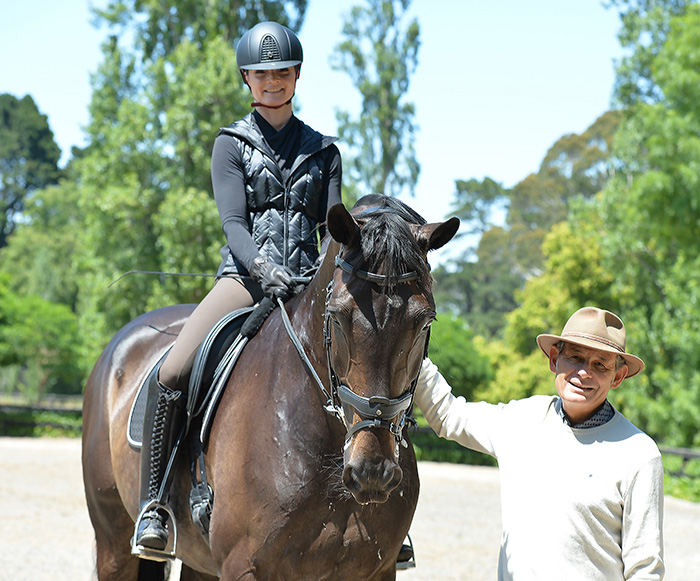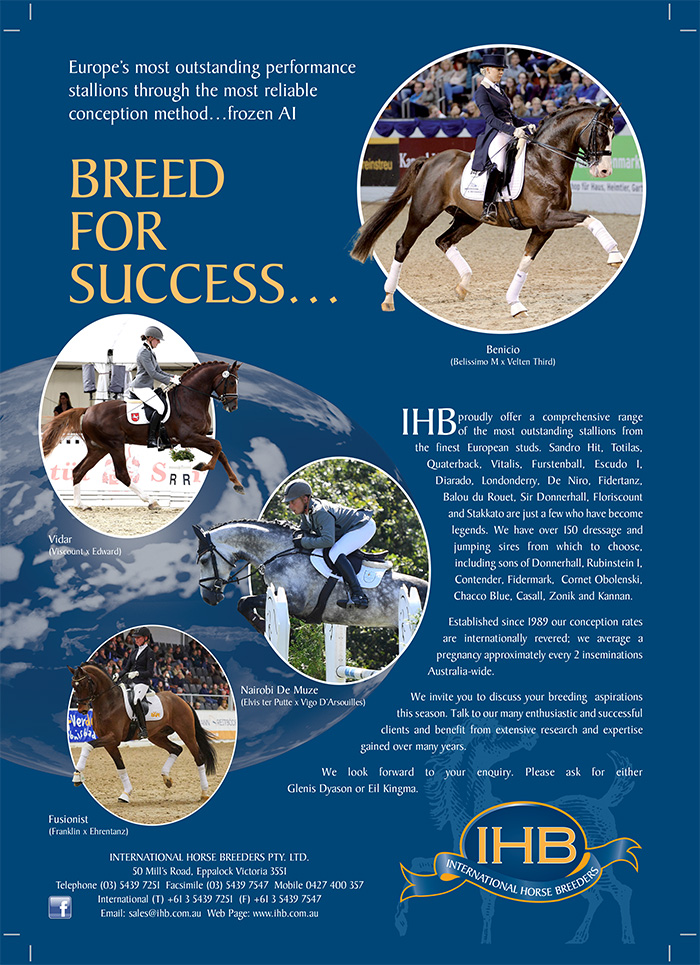Story – Christopher Hector Photos – Roslyn Neave
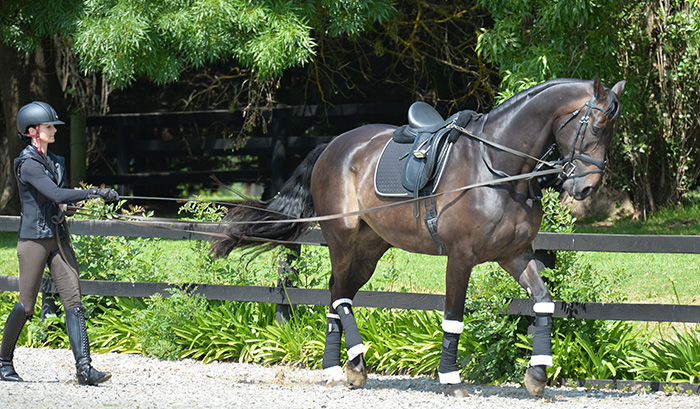
Pernille Hogg has been importing Spanish dressage trainer (and Olympic competitor) Rafael Soto to Australia for the many years, and when we arrive to see her work with Rafael, she is working her eight-year-old Danish gelding Bestseller (by Blue Hors Romanov) in the beautiful outdoor arena. It is obvious that Rafael is one of those teachers who leaves the student with the tools to do their own work, Pernille’s work in is straight out of the Soto handbook. She is working Bestseller in long reins, working on getting him listening to her, getting the horse balanced before she gets into the saddle. As she tells me, it is a matter of ying and yang…
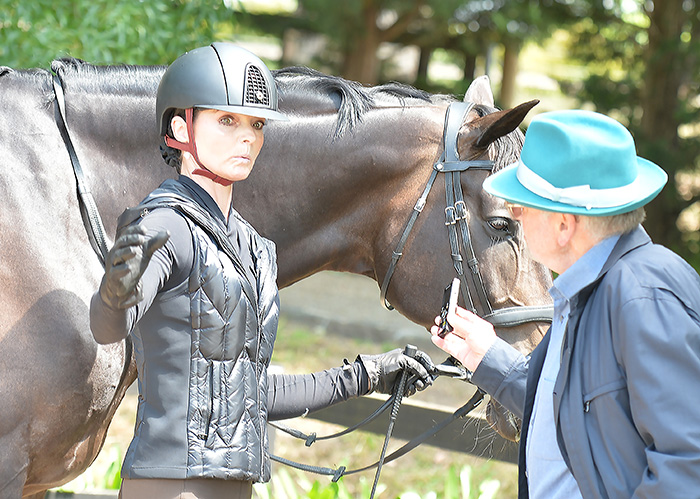
“I like to think about the extremes on either side, the ying and the yang, and we are always trying to find that centre point, the balance point in the middle where you feel centred. They are going forward and coming back, but thinking ‘backwards’ is not a good word to use. I like to think of it as ying and yang, so you are out of the extremes, you got there, and think oh oh that’s too much, and you are working your way into the centre, but the closer you get to understanding the centre, you don’t go out to the extremes any more. Yet, we all have to be out there because that is how we learn, because you go, whoa that was too much, or that was not enough. Then you work your way in, and when you have the beautiful centre point with your horse, that perfect spot of balance, of togetherness and connection. Even when you are there it is not exactly static, you are working with it, but you never seem to move quite as far out to those extremes any more because now you know. When you don’t know you can sometimes be searching in the wrong area but as you come closer and closer you start to understand what it is you have to find and achieve. That nice centre point of balance.”
And you find your little routine with the long reins before you ride, helps…
“Yes, because for me personally it gets me more relaxed and connected with the horse before I get on, instead of rushing and jumping on and trying to do a whole lot of stuff when you are just not ready because you are just not there – there’s too much going on in your mind. By doing the work in the long reins, it relaxes you and gets you ready for the work.”
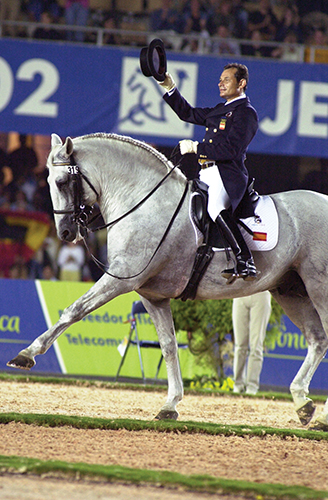
It is always great to see Rafael – he was wonderful to watch in the competition arena where he always put on a special show with his beloved, Invasor, and nowadays, he is in demand all over the world as a teacher. Which is not surprising as Rafael has a rare ability to teach from within the rider’s experience…
Great too to find time to sit in Pernille’s garden and talk over the lesson I have just seen.

Can we talk a little about balance… the last time I did a story with you and Pernille, it was the balance of a novice horse, now he is moving into a more sophisticated balance…
“He was a young horse then, only four years old, so we just want the horse supple, loose, confident to the legs, with the frame a bit forward. We search only for the rhythm, for the horse confident in the hand and to the legs. Now it is completely different, he has grown, he is more collected, we look more for the self carriage. You could see today steps of piaffe coming from short steps in the trot, you could see the connection in the canter, and all the lateral work is coming so nice in the trot, and in the canter. Simple and flying changes are already there. You can see it in the balance, the horse looks proud of himself.”
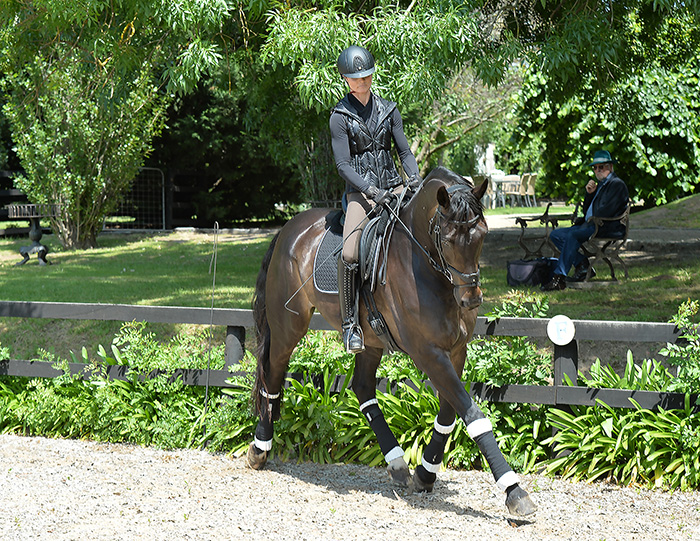
“This is why it is indispensable to look at the piaffe. Many people think, what is piaffe? Piaffe is something the top riders do in Grand Prix – no, no, no, that is not right. Piaffe is something you use to train your horse, to make the horse more together and more balanced. You can start the piaffe right from the beginning, even with a five-year-old horse, you can start to do it in the hand on the ground, or also when you are riding, and that helps make the steps of the horse more controllable, and out of that you have a much more beautiful stride forward, and a much more beautiful stride sideways.”
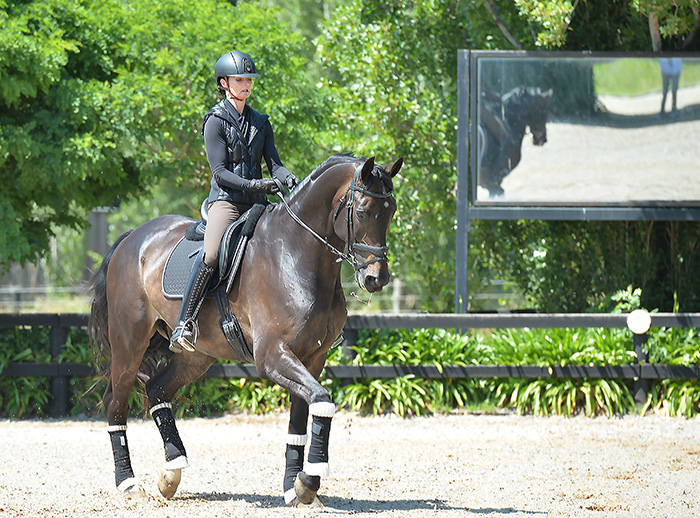
“The piaffe is like the quarters-in in the canter, from quarters-in comes the pirouettes, and this is the way you produce the balance. You bring the horse back to the hindlegs and free in front, and in self-carriage, and out of that you have everything else done, the changes, the half passes, the pirouettes, everything. So collection is indispensible, to bring the horse into the balance that makes him feel really, really educated. An educated horse in the balance, it means that he will live longer, it is healthy for the horse.”
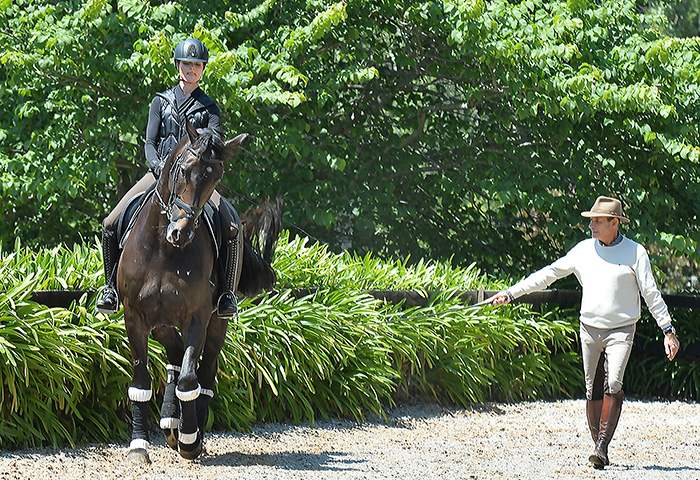
“When you see a horse free, he is able to do it by himself, equitation comes from the nature of the horse, the nature of the horse is dressage. When you see a young horse moving alone, or with others, they do that, they go, come back, they engage the hindlegs, they turn, they use that balance. Dressage comes from the natural nature of the horse, but when you ride, it is different, then you have to educate that balance, so that the horse understands this way of going. But a horse with no balance, without dressage, he lives not so long and is not so healthy. Health comes from the balance, it’s like humans, the person who lives a natural life, with food enough, but not too much, who does sport, he lives longer.”
“To do good dressage, makes the horse healthy.”
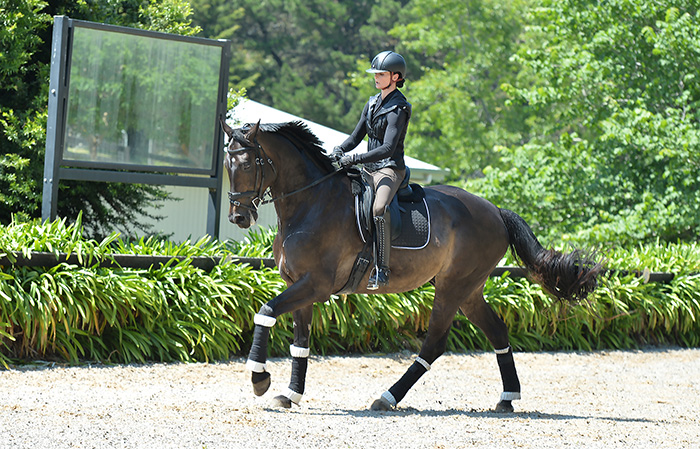
It is interesting that at times people can become obsessed with forward – forward, forward, forward – and often it becomes running…
“In my opinion the young horse classes, the horses move very much forward because then they can sell them for more money, and this is why they focus so much on forward, forward, forward but then they forget to come back, and what is difficult in the dressage, is to come back. You can see, there are not many horses that were champions in the young horse classes, that come into the Grand Prix level. Very few. If we remember the horses in dressage at the top of the rankings, how many of them were in young classes? One horse that was also very successful in the young horse classes was Damon Hill, a super fantastic horse, one of the best horses I have seen in the last years but you don’t see that very often. Where was Showtime, Bella Rose – not in the young classes. But the people are obsessed with forward, forward, forward, and this is not dressage.”
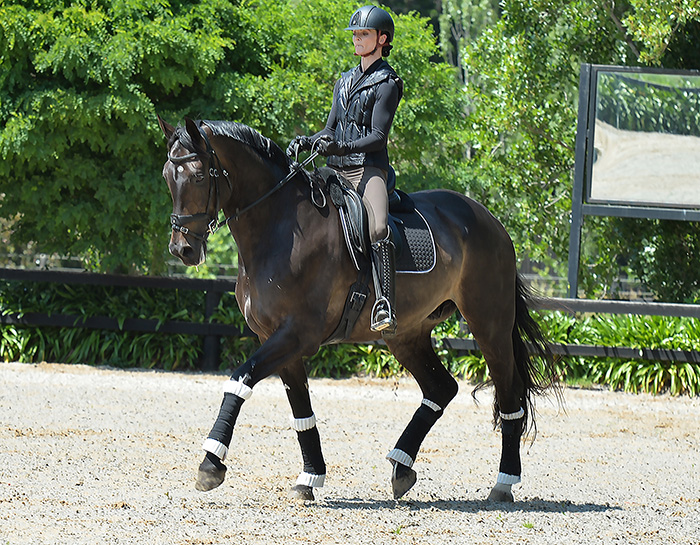
It’s not quite back is it, it is not backed off the bit and hollow in the back, it is back into balance…
“Back into balance where the hind legs carry the horse, the problem is carrying the back, carrying the balance, to really sit but going forward, and this is lovely to watch. That is when you see the contact and the balance of the rider and it is so beautiful to watch. The rider can sit, look forward and his horse just comes back just with the touch of the legs, this is good dressage.”
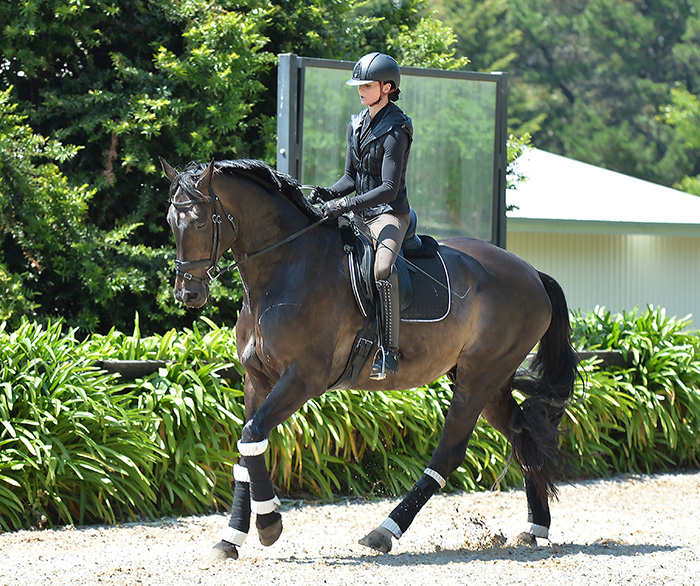
How can you teach the riders that…
“One of the first things to teach is to teach the rider his own balance, because if they do not have a good balance, they cannot teach the balance to the horse. The other important thing is to take to give. If they only take – then forget the balance. If they only give – they forget the balance. It is about taking the contact, using your leg and seat, and giving, giving, let the horse carry himself, then the horse can show his own personality. This is the way. Riders who are just holding, holding, can’t find the balance, they don’t give the horse time to find the balance.”
“There was a great master in Portugal, Nuno Oliveira, I never met him but I met his son, and I know many riders who came from his education, and I think about his saying: ‘You have to ask the horse, and let the horse do.’ Ask, and let do.”
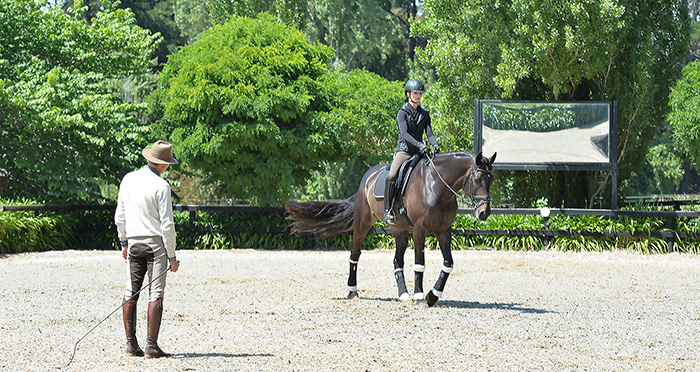
When you were working with Pernille today on this small trot to start with, to get the balance, I could remember when I rode with Nuno and he would always start with this little balanced trot and he would say ‘make your hands like you are eating soup, just a little movement that is light and round…’
“That’s it. To make the horse supple and so that he understands that he has to carry himself. There is another saying of Nuno, what is the contact? The contact, he says, is like a bird in your hand. If you open your fingers too much, the bird escapes, if you close, you can kill the bird. It is something like you just said, it is like eating soup. He also says, contact is about grams not kilos in your hand. Watch the good riders, when the horse comes back, they have grams, of course when they go forward, they have more grams and then less grams, and this is because the legs and the seat of the rider are working on the balance, and the horse is able to carry himself, and he comes back with the legs. When I was a teenager, my instructor said, stop the horse with your legs. And I have to do it, your legs bring the hindquarters to you and then the horse stops just with the grams of your hand. This is the good dressage, and in my opinion after so many years, is that there are only two sorts of dressage, the good and the one that is not good.”
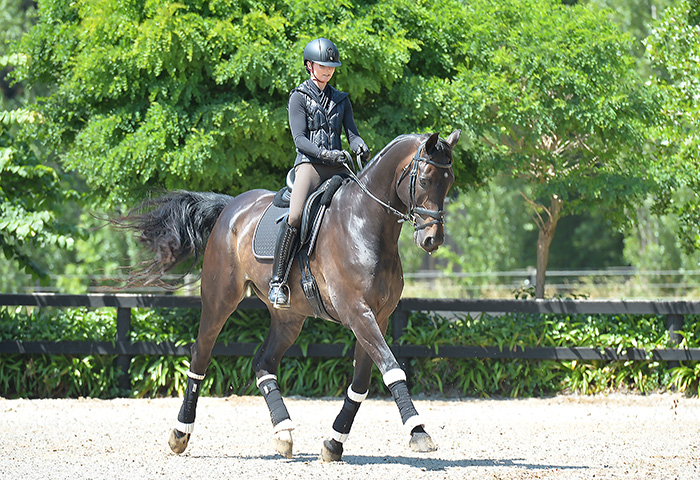
Today, in a lot of the work with Pernille, you were telling her, free the shoulder, make the shoulders get in front, how important is that? You worked on the balance to get the hindquarters dancing, but now the shoulders become important…
“The shoulders are so important, especially when the rider can open the neck of the horse. If the horse doesn’t use the neck, it is impossible for them to have free shoulders. You see quite often short necks, and short neck is too much kilos in the hand and no balance, and no freedom in the shoulders. We need to show the freedom in the shoulders, the horse will carry himself and show a supple back, like he is moving free in the paddock. This is the good dressage, and, most important, the horse shows a nice frame, and with all the good riders, you can see that. With the good riders, the neck is just there in front – not too long, because if it is too long he just goes out of the hand, too short, they block the whole body and they cannot give the sensation of freedom. In good dressage, you see the horse moving naturally, natural like he would be without a rider. This is dressage.”
It is also great dressage instruction…
